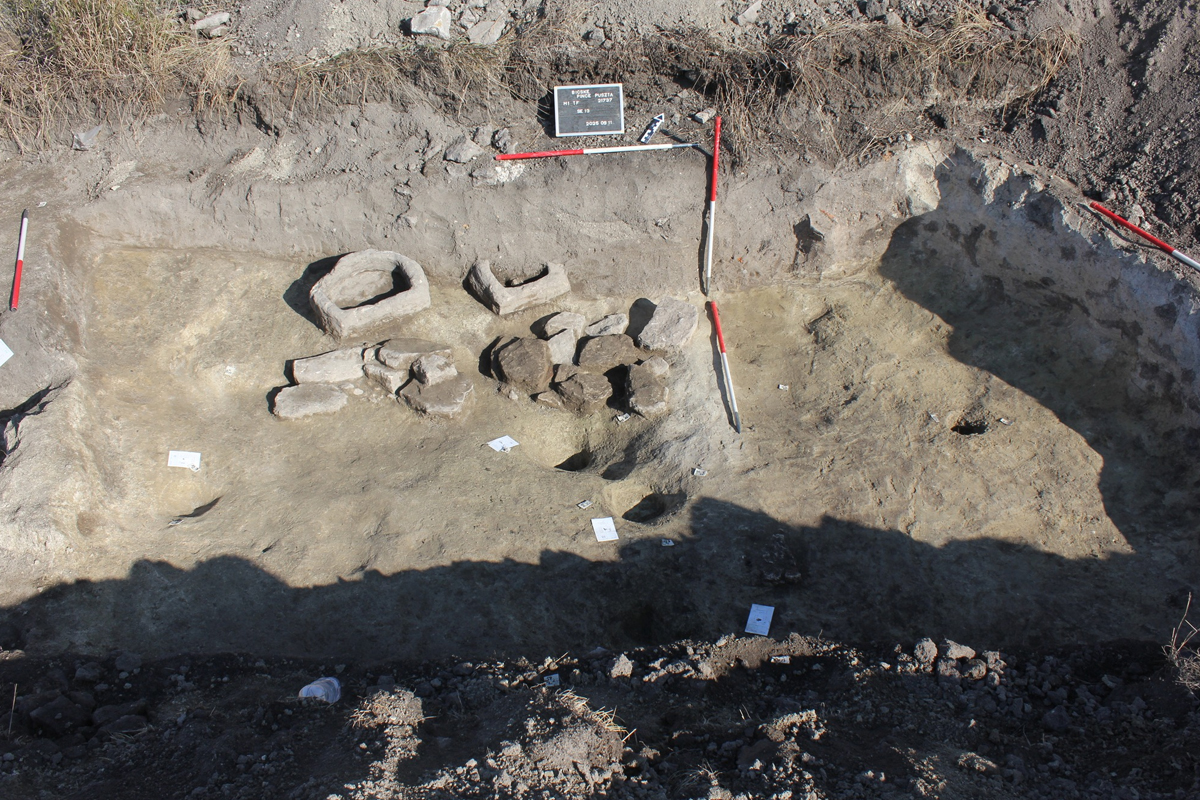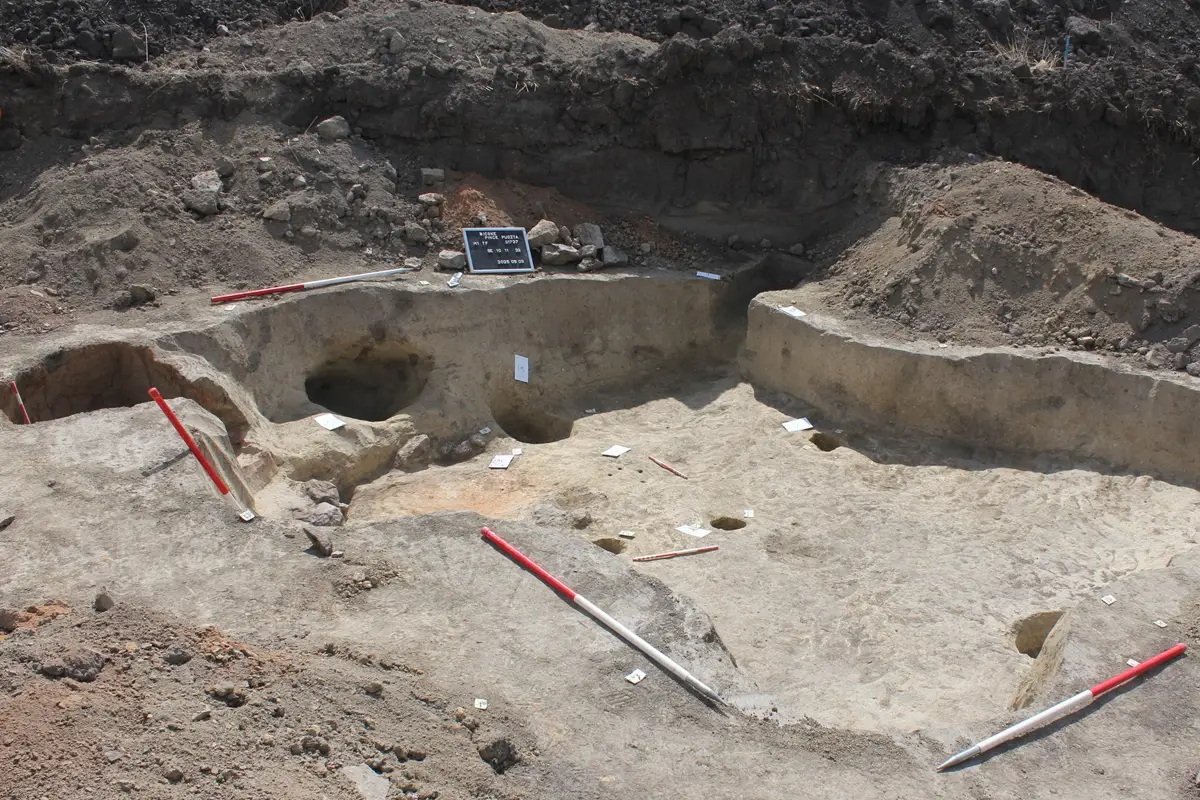Archaeologists from the King St. Stephen Museum conducted an excavation near Bicske in Fejér County, Hungary, revealing both Roman and Árpád-era settlements.
Commissioned by the National Archaeological Institute of the Hungarian National Museum, the excavation was in connection with the planned expansion of the M1 motorway.
Within the Roman context, archaeologists found the remains of several structures, including a large storage pit and ditches.
Two parallel stone tracks laid over a carefully prepared clay floor suggest that the structures served an industrial function, possibly as stables or for storage.
According to experts, ceramic and metal artefacts date the settlement to around the 1st and 2nd centuries AD when the region was part of the Roman province of Pannonia.

Above the Roman layer, archaeologists identified a late Árpád settlement, referring to a period during the 9th and 10th centuries when a confederation of the Magyar tribes were ruled by Árpád – the sacred ruler or kende of the Hungarians.
The son of Álmos (who is mentioned as the first head of the confederation of the Magyar tribes), the dynasty descending from Árpád ruled the Kingdom of Hungary until AD 1301.
This medieval site consisted of two sunken houses, an outdoor furnace, and several storage pits. Evidence suggests that one of the dwellings underwent two distinct phases of use: initially equipped with a corner stove, the structure was later renovated and expanded, replacing the stove with a new furnace and storage area.
“The Bicske excavation has contributed valuable insights into the continuous human presence in the region from the Roman Empire to the Árpád Dynasty”, said a representative from the excavation.
Header Image Credit : Alexandra Kiss
Sources : King Stephen Museum





